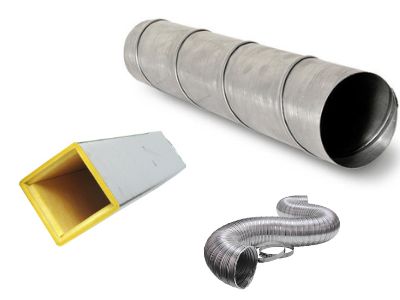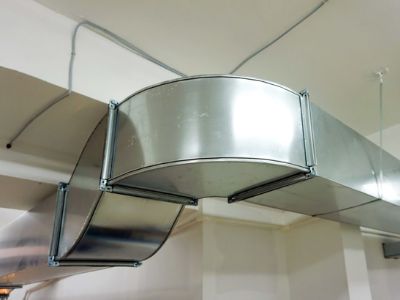Understanding the Different Types of Air Duct Designs
If the furnace and compressor are the twin hearts of an HVAC system, then the air ducts are the arteries and veins that bring in the good air and carry away the bad to maintain optimal comfort. Anyone installing or upgrading their system may be wondering about the different types of air ducts and which is the best overall solution.
One can install four different types of air ducts in a home or office:
- Sheet metal
- Fiberglass
- Fiberboard
- Flexible
Why Are There Different Ductwork Materials?
Every home and office is unique, with different HVAC needs and solutions. What is appropriate for one situation may not fit or work in another. Some considerations might include:
- Available space
- Heating and cooling needs
- Furnace, compressor, and blower capacity
- Location of the ducts
- Aesthetics
Commonly Used Air Ducts
Each of the four most common air duct types has its advantages and disadvantages. Let’s take a closer look at each:
Sheet Metal Air Ducts
This type of air duct is typically made from aluminum or galvanized steel, and it is the most-used air duct type.
Pros
- Durable
- Lightweight
- Easy to clean
- Unlikely to promote mold growth
Cons
- May trap dust
- Not ideal for small or convoluted spaces
Fiberglass-Lined Air Ducts
This type of air duct still uses sheet metal but has an added interior fiberglass lining that helps prevent heat loss.
Pros
- Limits heat loss
- Reduces HVAC noise
Cons
- Harder to clean
- Less durable
- More likely to trap mold and bacteria
Fiberboard Air Ducts
These ducts are made from compressed fiberglass strands and resin that has been covered in foil laminate for insulation.
Pros
- Lightweight
- Less expensive
- Well-insulated
Cons
- Rough interior traps dust
- Very difficult to clean
- May promote mold growth
- Concerns about air quality
Flexible Air Ducts
While the other types of air ducts are rigid and square/rectangular, flexible air ducts are cylindrical. They are made of a wire coil covered with plastic and then wrapped in foil insulation.
Pros
- Can be used in spaces where rigid ducts will not fit
- Inexpensive
- Easy and quick installation
Cons
- If not supported properly, can snag or snake
- Too many turns can reduce airflow
- Poor airflow can compromise efficiency
How To Choose the Right One
Ultimately, the best type of air duct is the one that fits the particular situation of the individual home or office. For example, quieter fiberglass air ducts might be the right choice in an office where noise is an issue, while flexible ducts are the right choice when the installation space is tricky.
Where air quality is the primary concern, sheet metal ducts might be most appropriate. They are the top design for reducing the risk of health concerns from mold and bacteria.
The smartest way to determine the proper air duct for a specific installation is to consult with a reputable local HVAC specialist. For optimal performance and service life, all air ducts, regardless of type, should be regularly inspected and cleaned by trained and expert HVAC professionals.
About 4 Seasons Heating & Cooling
Since 2008, 4 Seasons Heating & Cooling has helped home and business owners with all their HVAC needs – installation, inspection, service, repair, and maintenance. Proudly serving the entire Reno, Nevada, area, 4 Seasons is a family-owned business providing a level of customer service that no other HVAC company can. Call today for all HVAC needs!



